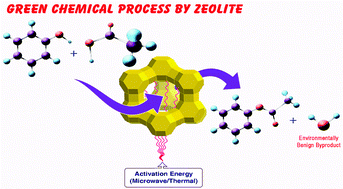Synthesis of N-heterocyclic compounds over zeolite molecular sieve catalysts: an approach towards green chemistry†
Abstract
The need for environmentally benign reactions is very important in view of today's eco-friendly conscious attitude. “Benign by Design” represents the 12 principles of Green Chemistry as articulated by John Warner and Paul Anastas (Green Chemistry: Theory and Practice, Oxford University Press, New York, 1998, p. 30) These principles have given chemists a framework for the evaluation of the chemical procedures and help chemists to develop synthetic procedures which are more efficient, create less waste, use and produce less toxic substances. Many chemists already considered some of these principles without giving much attention. The difference between traditional chemistry and green chemistry is that the green chemistry demands issues of sustainability and environmental impact; in essence we design chemicals that are inherently more benign. In recent years, the use of solid acid catalysts such as zeolites and zeotype molecular sieve (D. W. Breck, Zeolite Molecular Sieves, Wiley, New York, 1974; A. Dyer, An Introduction to Zeolite Molecular Sieves, John Wiley & Sons, Chichester, 1988) catalysts in the manufacture of fine chemicals, chemical intermediates, drugs and drug intermediates has attracted increasing interest as green catalysts. Owing to the special features of zeolites such as shape selectivity, thermal stability, controlled variability, reusability and eco-friendly nature, these catalysts are most sought after in green chemistry. This perspective particularly illustrates the application of zeolites and zeotype catalysts for the synthesis of various N-heterocyclic compounds. For proposed reaction mechanisms see ESI.


 Please wait while we load your content...
Please wait while we load your content...